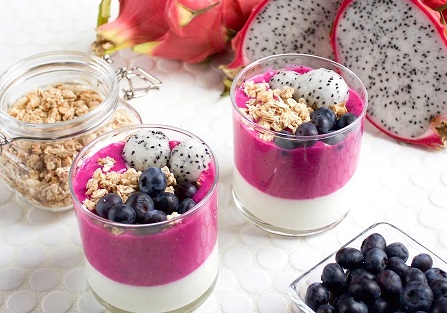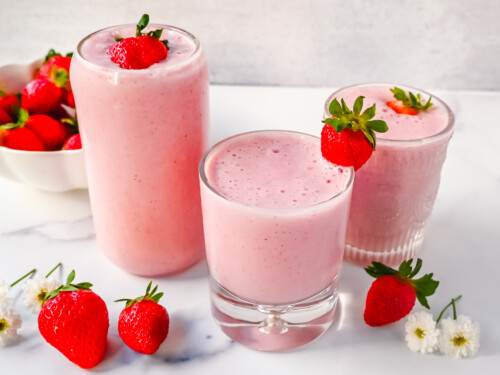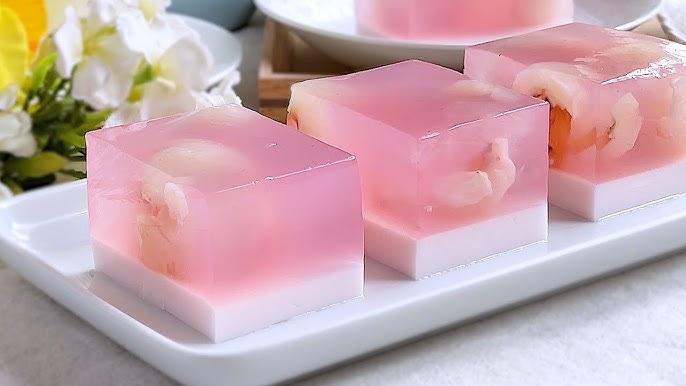Image | Title | Ratings | Link |
 | Orange Chocolate Mousse | 5/5 | |
 | Dragon Fruit Parfait | 5/5 |
Orange Marmalade
Orange marmalade is a classic spread that combines the sweet and tangy flavors of oranges with a hint of bitterness from the peel. This citrusy marmalade is perfect for spreading on toast, adding to baked goods, or using as a glaze for meats.
Making orange marmalade at home can be a rewarding process, resulting in a delicious, homemade preserve with a fresh and vibrant flavor.
Ingredients:
- 4 large oranges
- 1 lemon
- 4 cups (800g) granulated sugar
- 2 cups (480ml) water
- 1 package (1.75 oz or 49g) fruit pectin (optional, for a firmer set)
- 1/4 teaspoon salt
- 1/2 teaspoon vanilla extract (optional, for added depth)
Equipment:
- Large pot or Dutch oven
- Paring knife
- Cutting board
- Cheesecloth (optional, for straining)
- Wooden spoon
- Sterilized jars with lids for storage
- Canning funnel (optional)
- Ladle
Step 1: Prepare the Fruit
Start by washing the oranges and lemon thoroughly. To ensure a good flavor balance, choose ripe, juicy oranges.
Peel the oranges, making sure to remove as much of the white pith as possible, as it can add bitterness to the marmalade. Slice the peels into thin strips or small pieces, depending on how chunky you want your marmalade. Place the sliced peels in a large bowl.
Segment the oranges by cutting between the membranes to release the flesh. Discard any seeds and chop the segments into small pieces. Add the chopped orange segments to the bowl with the sliced peels.
Do the same with the lemon: peel it, slice the peels into thin strips, and chop the lemon segments. Add the lemon to the bowl with the oranges.
Step 2: Cook the Fruit
Transfer the sliced peels and chopped fruit to a large pot or Dutch oven. Add 2 cups of water to the pot. Bring the mixture to a boil over medium-high heat, then reduce the heat to low and let it simmer for about 45 minutes to an hour, or until the peels become tender.
If using fruit pectin for a firmer set, follow the package instructions for how to incorporate it at this stage. Generally, it’s added after the fruit has been cooked.
Step 3: Add the Sugar
Image | Title | Ratings | Link |
 | Grilled Pineapple Skewers | 5/5 | |
 | Berry Parfait | 5/5 |
Once the fruit mixture is tender, stir in the granulated sugar and salt. Increase the heat to medium and cook the mixture, stirring constantly, until the sugar is fully dissolved. Once dissolved, bring the mixture to a rolling boil. Boil for about 10–15 minutes, stirring frequently to prevent burning.
To test if the marmalade is set, use the plate test: place a small plate in the freezer before starting. Spoon a small amount of the marmalade onto the chilled plate and let it sit for a minute. Run your finger through the marmalade; if it wrinkles and holds its shape, it’s ready. If not, continue boiling for a few more minutes and test again.
Step 4: Add Flavorings (Optional)
If desired, stir in the vanilla extract for added depth of flavor. This step is optional but can enhance the complexity of the marmalade.
Step 5: Sterilize and Fill Jars
While the marmalade is cooking, sterilize your jars and lids by boiling them in water for 10 minutes. Once the marmalade is ready, remove it from the heat and let it cool slightly. Using a ladle and canning funnel, carefully pour the hot marmalade into the sterilized jars, leaving about 1/4 inch of space at the top.
Wipe the rims of the jars with a clean cloth to remove any residue, then place the lids on tightly.
Step 6: Store and Enjoy
For long-term storage, process the filled jars in a boiling water bath for 10 minutes to ensure a vacuum seal. Let the jars cool to room temperature. Once sealed, orange marmalade can be stored in a cool, dark place for up to a year. After opening, keep the marmalade refrigerated and use within a few weeks.
Serving Suggestions
Orange marmalade is versatile and can be used in various ways. Spread it on toast or scones, mix it into yogurt or oatmeal, or use it as a glaze for roasted chicken or pork.
Enjoy the vibrant, citrusy goodness of homemade orange marmalade!
Thanks for visiting Fruits Recipes
Image | Title | Ratings | Link |
 | Mango Smoothie Bowl | 5/5 | |
 | Apple Pie | 5/5 | |
 | Chicken with Lemon and Olives | 5/5 | |
 | Strawberry Banana Smoothie | 5/5 |






